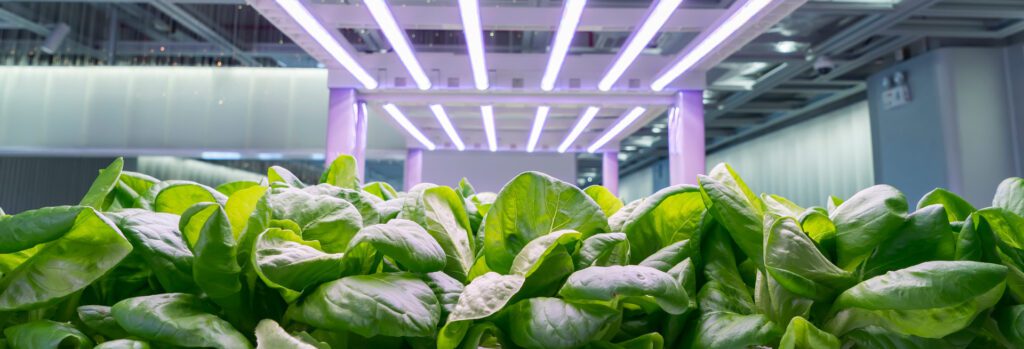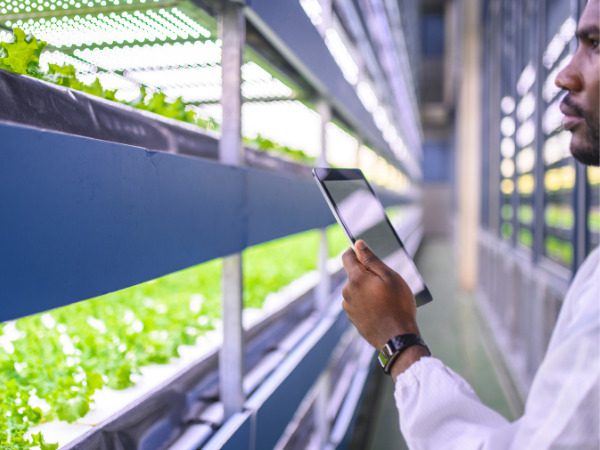New Clean Hydrogen Tax Credit on the Horizon
A new tax credit, the clean hydrogen tax credit, may be on the horizon for businesses that invest...

Canada’s horticultural sector, and more specifically Greenhouse Vegetable Industry, is one of the main contributors to Canada’s export sales with 51.3% of freshly produced exports according to the Agriculture and Agri-Food Canada (AAFC) report. Greenhouse vegetable farming utilizes an indoor farming technology where agricultural products are grown and produced in a self-contained, well-conditioned environment, otherwise known as CEA.
Controlled Environment Agriculture (CEA) has become very popular over the past decade due to advantages such as year-round cultivation and higher production rate compared to conventional indoor cropping. CEA utilizes the latest advancement and innovation in plant photobiology, engineered system design, smart control systems, and automation technology to provide optimal product quality, production efficiency, and energy consumption. To fulfill the rising demand for agricultural products, and due to shortage of resources such as water, fertile soil, and suitable climate, the Canadian greenhouse industry will continue its fast growth in the coming years. In regards, here are some opportunities to innovate within the Canadian greenhouse industry:
One of the areas of continuous improvement in the Canadian indoor farming sector is to implement automation technologies such as robotics for planting, seeding, weeding, sampling, and harvesting, sorting and packaging, as well as automatic climate change, lighting, and irrigation. Canadian farms have been facing a labor shortage in the past, and recently, the issue has escalated because of COVID-19 pandemic. According to the Canadian Agricultural Human Resource Council (CAHRC), the current gap in the labor market will be doubled by 2025. Regarding that, the greenhouse industry welcomes new and/or improved automation technologies. The proposed technology is expected to enhance production efficiency and reduce labor time to accomplish tasks, while being cost-effective and safe to be implemented in the CEA facilities.
Precision agriculture (PA), also called “smart farming”, is an emerging approach where automated data gathering systems such as aerial digital imagery, GPS mapping, artificial intelligence, Internet of Things (IoT) are employed to optimize farm management activities such as seeding, weeding, irrigation, and harvesting. The PA technologies have been utilized mainly in large size farms (above 500 acres) in Canada. According to AAFC, about 40% of large size farms utilize one or more PA technologies such as GPS, precision map, or autosteer. However, the high-cost associated with PA technologies (software and/or hardware, machinery) has made them less favorable to be adopted by smaller-size farms and greenhouses. Therefore, as the number and size of greenhouse farms increase, there are growing opportunities for development of cost-effective PA technologies (to be acquired by small and medium sized farms).

CEA provides a refined environment by controlling essential variables for plant growth such as light (spectrum, intensity, period), air quality (humidity, carbon dioxide, temperature), air circulation (flow rate, speed, direction), nutrients, and water. These influential variables create a complex matrix that can only be precisely controlled and manipulated through a well-designed CEA system. Furthermore, energy (electrical, and thermal) management is pivotal to the success of CEA operations which creates opportunities to involve innovative engineered systems (HVAC and dehumidification, lighting, aeration and irrigation, sensors and data processing unit) to optimize the greenhouse operations with respect to the local climate conditions, greenhouse physical parameters, and plant characteristics.
One of the most important growth factors in indoor cultivation is light which is the primary energy source that drives plant metabolism, and helps plants to adjust themselves with changes in their environment (days and nights, season transitions). In greenhouse farming, the spectrum, intensity and photoperiod of the artificial light play a significant role in growth, morphology, health, and several other characteristics of the plant. Although there has been great advancement in plant photobiology science for horticultural crops, there is still room to fully understand the plant-environment interactions, especially in UVA&B ranges, to produce sufficient energy for healthy growth (photosynthesis), prevent plant disease, and avoid harmful side effects (phototoxicity, and photoinhibition) for different plant cultivars at different developmental stages. Fulfilling this knowledge gap becomes more critical for emerging applications such as the cannabis industry which is relatively new, and rapidly growing in Canada.
At Leyton, we have expertise for different technology sectors to assist industries that are investing on research and development (R&D) and applying for governmental grants to advance their technologies. One of the business assistance programs which can help all industry sizes to continue their R&D work is the scientific research and experimental development (SRED) tax incentive program. Experienced in working with agriculture companies, our team is fully equipped to connect you with the best opportunities to empower your future.
Explore our latest insights
More arrow_forward
A new tax credit, the clean hydrogen tax credit, may be on the horizon for businesses that invest...

The Clean label has transitioned from trend to a lifestyle placing pressure on the food and bever...

The Industry 4.0 represents a blend of two industries: information technology and manufacturing. ...

Provincial governments are slowly unveiling their provincial budgets outlining fiscal strategies ...